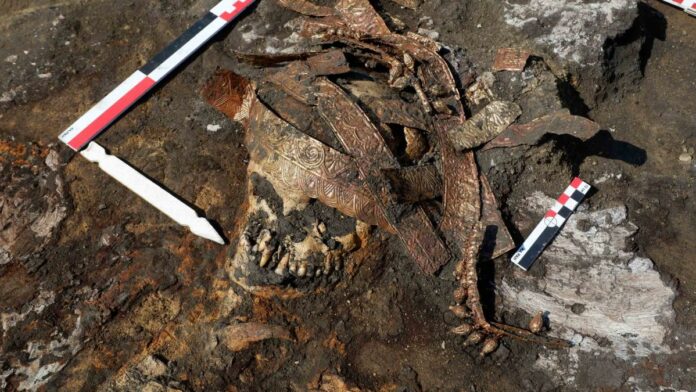For the first time, researchers have uncovered the remains of four Amazons with different ages in the same tomb, according to a release by Russia’s RAS Institute of Archeology.
The Tomb Discovery
Within the tomb, located in Russia, made of clay and oak blocks, they found skeletons of four women. One was estimated to be between 12 and 13 years old when she died, the second was 20 to 29 years old, a third was 25 to 35 years old and the fourth was 45 to 50 years old.
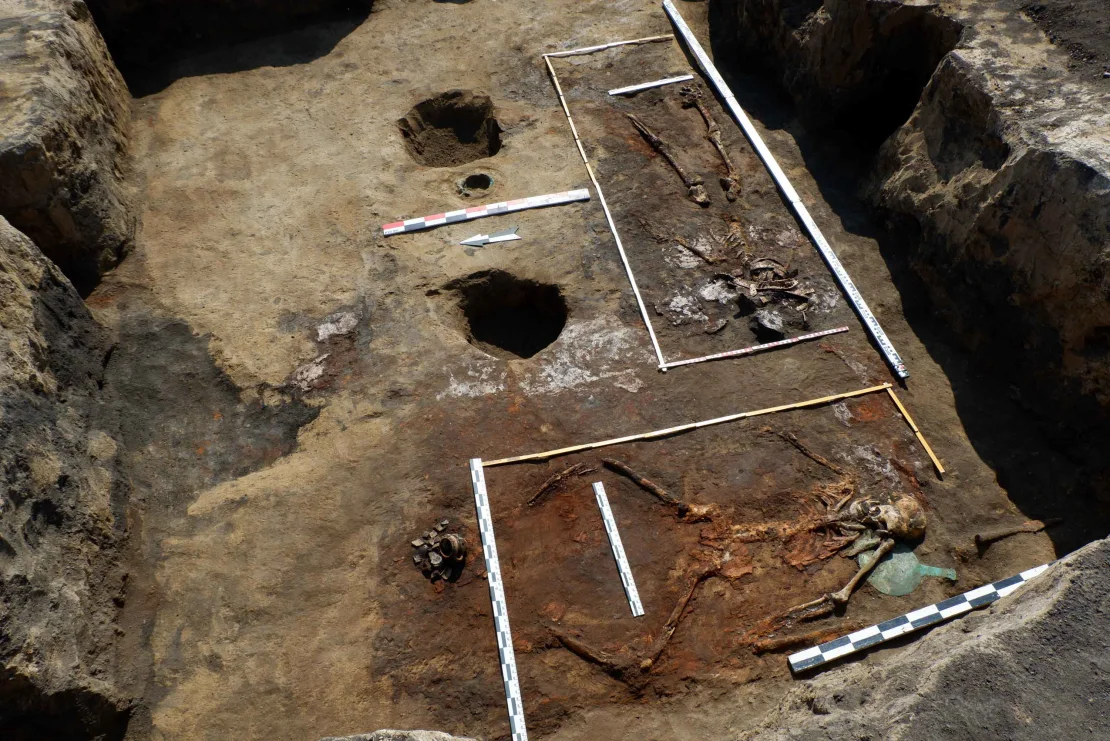
Amazons and Scythians
Scythians were nomadic tribes of warriors that lived across Siberia between 200 and 900 BC. Amazons, like those depicted in the “Wonder Woman” film, were Scythian warrior women. The remains align with other previous discoveries to show that Amazons lived among other nomadic tribes in Eastern Europe.
Items Unearthed
Items found with the remains helped the researchers to estimate their burial occurred during the 4th century BC. Iron arrowheads, a bird-shaped iron hook, horse harnesses, harness hooks, iron knives, animal bones, molded vessels and a broken black lacquer vase painted with a red palmette were found with the teenage girl and one of the young women. Their part of the tomb was disturbed by grave robbers in ancient times.
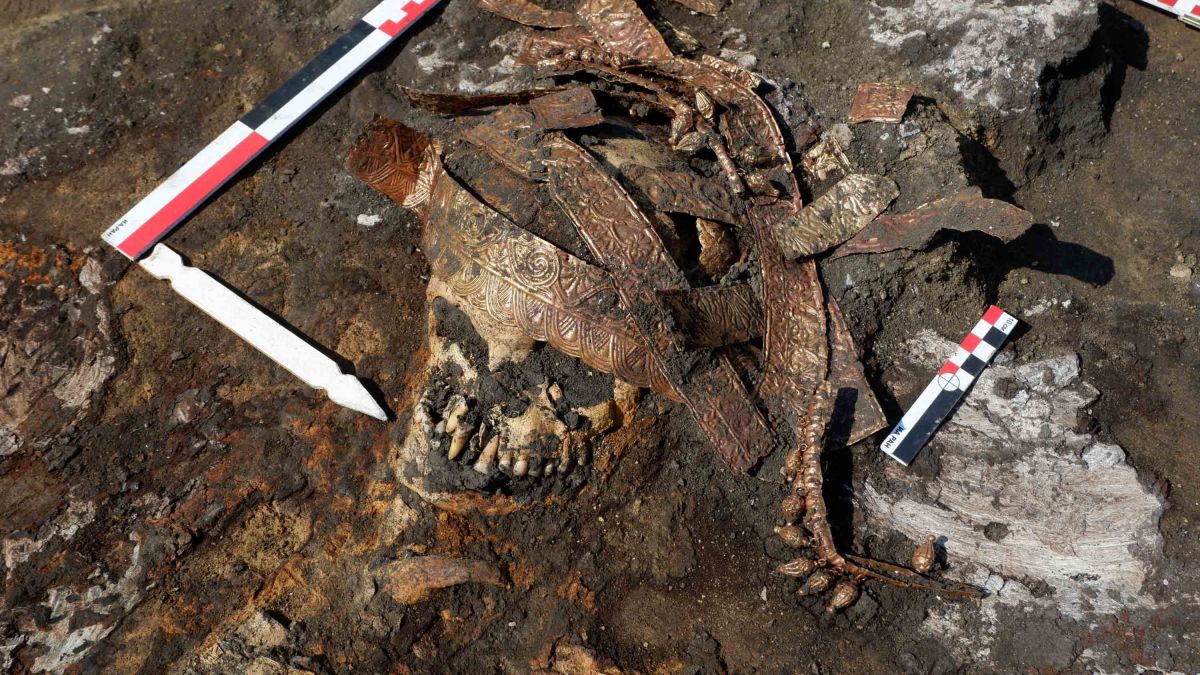
Excavations and Burial Customs
Excavations of the burial sites belonging to the Amazon warrior women revealed interesting details. The young woman was buried as a “horseman,” which includes a specific grave tradition of cutting the tendons in the legs. She was accompanied by a bronze mirror, two spears, a glass bead bracelet, and two vessels. The graves of the other young woman and the older woman remained pristine, still reclining on wooden beds covered in grass.
The Oldest Woman
The oldest woman bore a surprise, besides her age. She was buried in a calathos, or ceremonial headdress, bedecked with floral ornamented plates and shaped pendants. Her jewelry was 65% to 70% gold, mixed with copper, silver, and iron to create an alloy. She was also buried with an iron knife wrapped in fabric and a rare iron arrowhead with a forked end. The headdress is a unique find because so few survived burial to be uncovered by archaeologists, the researchers said.
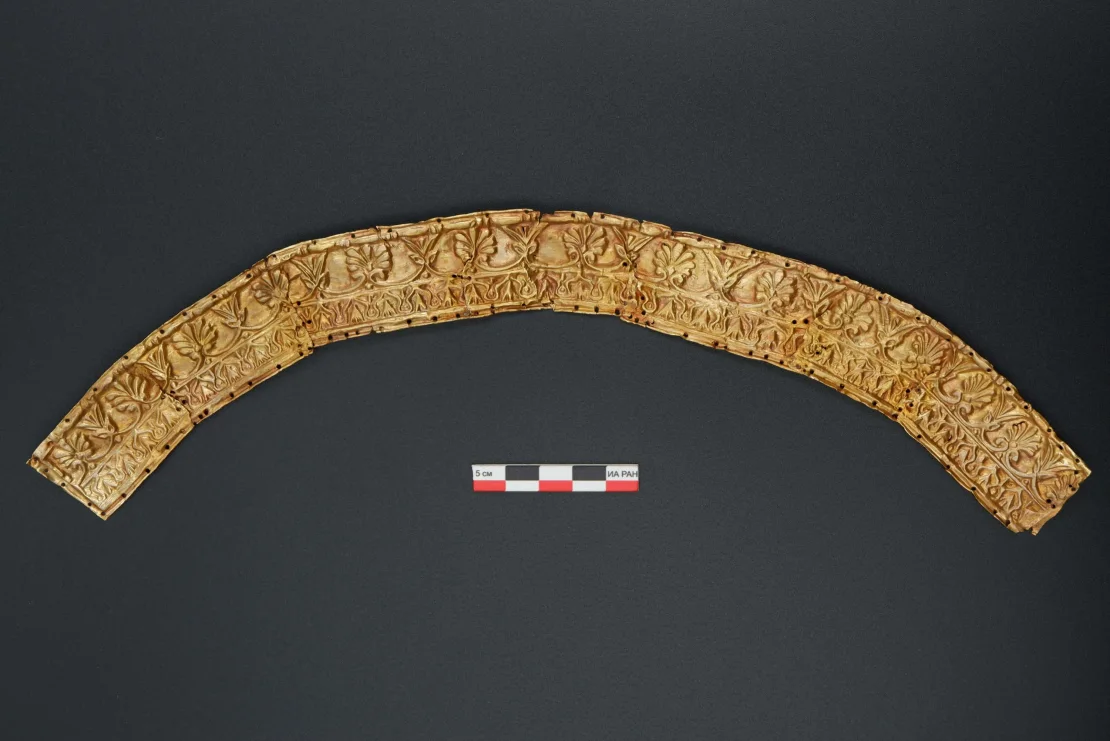
Devitsa V Cemetery
The remains were found in a cemetery known as Devitsa V, a site consisting of 19 mounds that has been studied since 2010 in the Voronezh region of Russia. This year, the Don Archaeological Expedition from the Institute of Archeology of the Russian Academy of Sciences excavated the remains of the four women in one of the mounds.
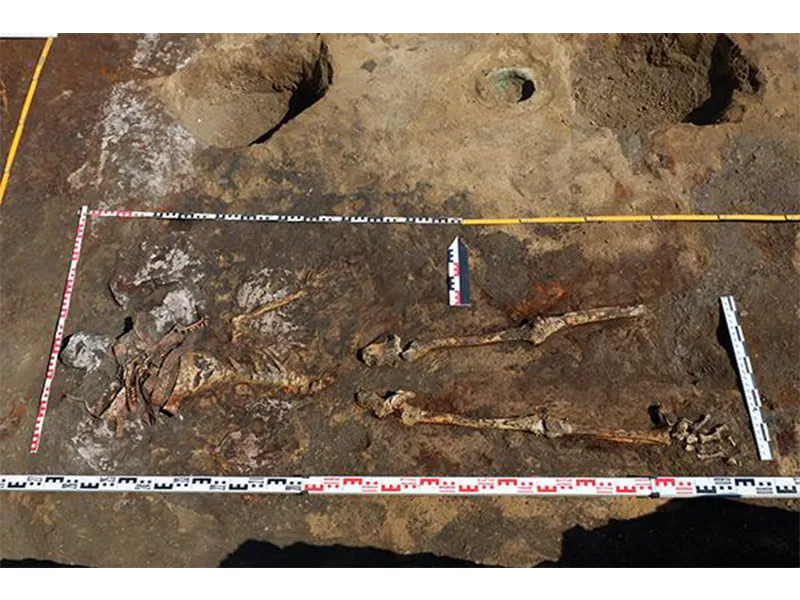
Conclusion
The discovery of the Amazon tomb provides further evidence that Amazons lived among other nomadic tribes in Eastern Europe. The well-preserved artifacts and unique burial customs shed light on the lives and status of these Scythian warrior women, offering valuable insights into ancient history.
